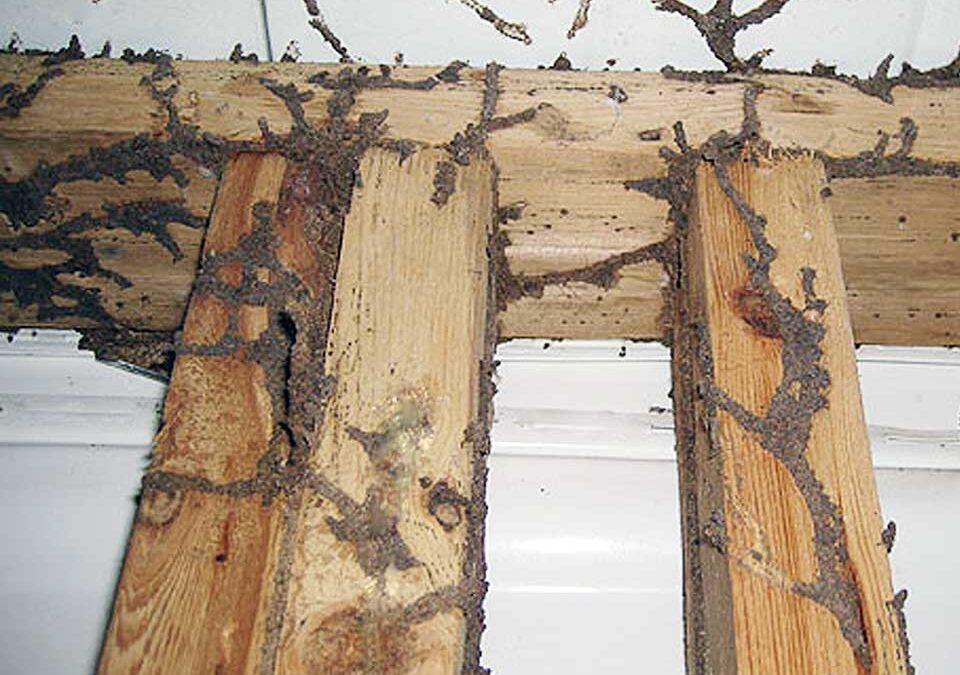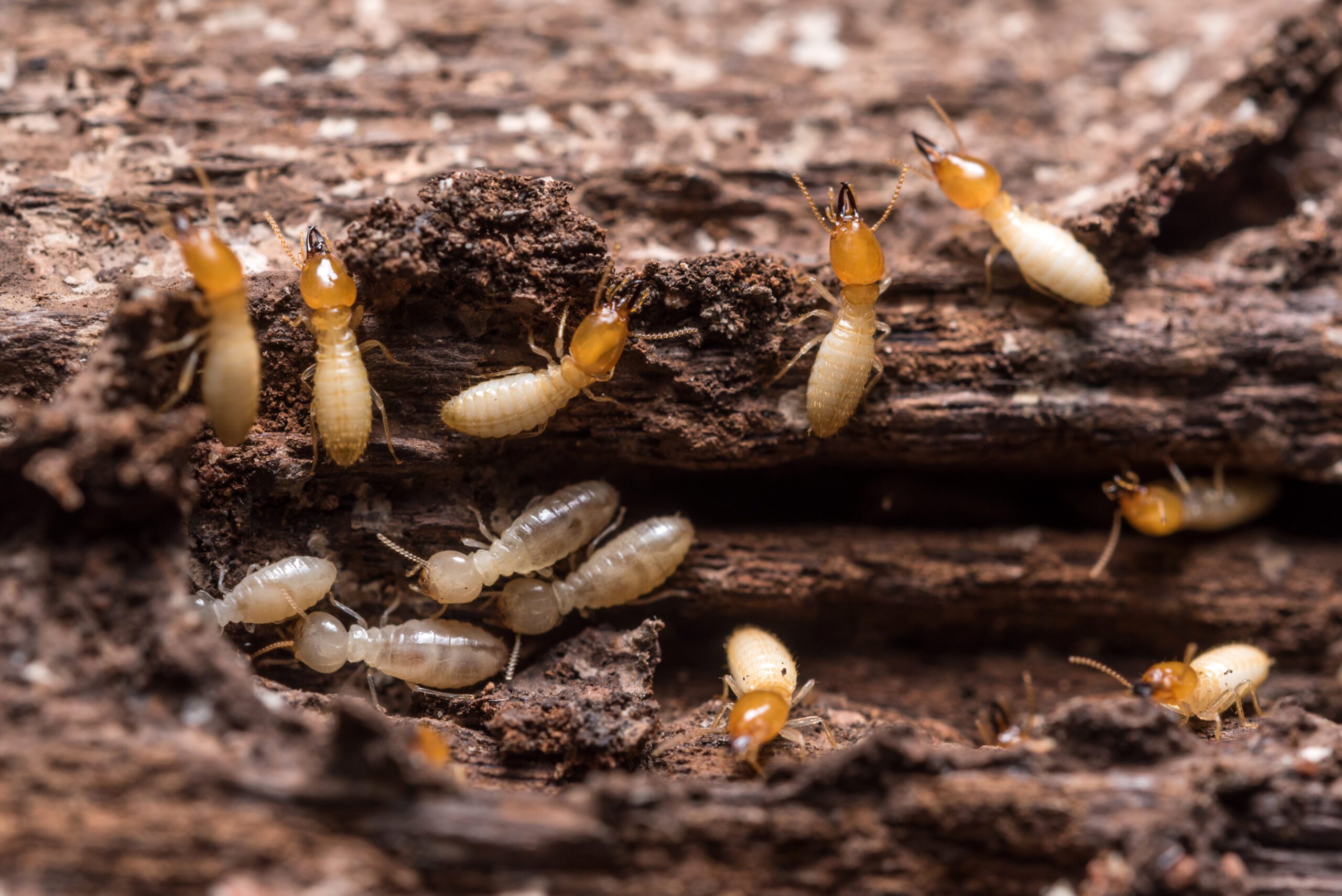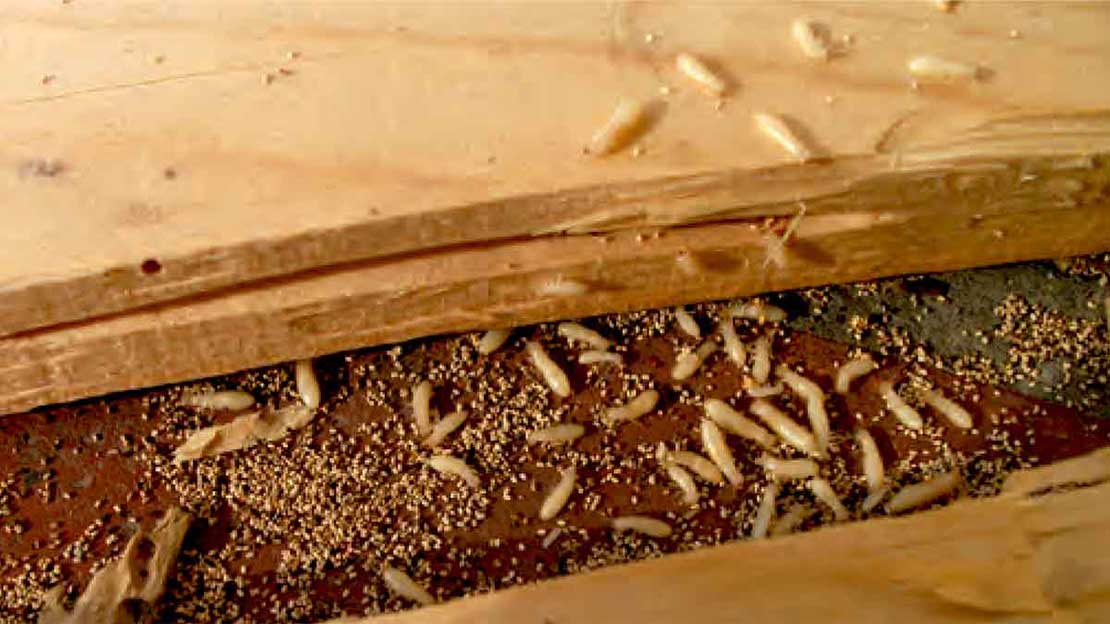Florida’s subtropical climate—featuring year-round warmth, consistent humidity, and mild winters—grants termites near-constant opportunities to forage and expand their colonies. Unlike colder regions where deep freezes curtail termite populations, Florida’s gentle cold season barely hinders these wood-feeding pests. In major urban centers like Miami—where residential blocks, commercial hubs, and tourist districts converge—termites can infiltrate wooden structures unnoticed, silently compromising framing, beams, or furniture. This service page outlines why termites flourish in Florida, the red flags indicating an infestation, and why enlisting a professional termite exterminator is the most comprehensive method to safeguard your property’s structural integrity and occupant well-being.
Whether you manage a home in Miami or oversee real estate in Miami Beach, Key Biscayne, Miami Gardens, or North Miami Beach, spotting termite presence early—and implementing targeted treatments—saves you from extensive, costly damage while protecting property value and occupant confidence.
Why Termites Thrive in Florida
Mild Winter Temperatures
In colder climates, subfreezing winters slow or kill off termites for several months. Florida’s mild winter seldom drops below freezing, allowing subterranean and drywood termites to remain active indoors and outdoors without a dormant season. Heated or air-conditioned buildings maintain comfortable ranges (65–85°F), letting termites feed and breed continuously.
High Humidity and Moisture
Termites, particularly subterranean varieties, require damp environments to survive. Florida’s regular rainfall, irrigated lawns, or plumbing leaks sustain the moisture necessary for termite mud tubes or underground nests. Even minor condensation or unsealed cracks in foundations can be enough for termites to establish routes indoors.
Plentiful Wood Sources
From wooden framing and trim to fences, decking, or mulch around homes, properties in Miami present ample cellulose-based materials for termites to devour. In multi-unit dwellings or tightly spaced neighborhoods, once an infestation begins, termites can spread through connected walls or utility conduits, affecting multiple units if occupant or property manager vigilance slips.
Rapid Colony Expansion
Termite queens lay numerous eggs daily, while worker termites forage widely. Under Florida’s conducive climate, new termite generations hatch and mature quickly, stealthily tunneling deeper into walls or subflooring. A small infiltration can swiftly balloon into an extensive infestation if not detected.
Inadvertent Transportation
Wooden items—pallets, crates, secondhand furniture—are moved regularly across Florida. If these pieces harbor hidden termite colonies, they can deliver pests into new locations. Frequent shipping routes and occupant changes compound this risk in areas like Key Biscayne or Miami Beach, particularly where tourism or overseas cargo is common.

Telltale Signs of a Termite Infestation
- Mud Tubes
- Subterranean termites construct small earthen tunnels along foundations, crawl space walls, or basement edges.
- These pencil-thin tubes protect termites traveling between soil and their wood target.
- Subterranean termites construct small earthen tunnels along foundations, crawl space walls, or basement edges.
- Discarded Wings
- Swarming termites shed translucent wings around windowsills, doorways, or light fixtures after mating.
- Piles of wings often signal a newly formed termite colony nearby.
- Swarming termites shed translucent wings around windowsills, doorways, or light fixtures after mating.
- Hollow-Sounding or Blistered Wood
- Termites feed from inside, leaving thin wood exteriors. Tapping beams, door frames, or trim that echo hollow can reveal hidden termite galleries.
- Peeling paint or blistering surfaces may also suggest concealed damage beneath.
- Termites feed from inside, leaving thin wood exteriors. Tapping beams, door frames, or trim that echo hollow can reveal hidden termite galleries.
- Drywood Termite Frass (Droppings)
- Drywood species leave small, ridged pellets resembling sawdust or coffee grounds.
- Found in piles near holes or cracks in wooden furniture, baseboards, or overhead beams.
- Drywood species leave small, ridged pellets resembling sawdust or coffee grounds.
- Swarmers
- Alate (winged) termites emerge in warm, humid months, especially after rain, to start new colonies.
- Spotting a swarm indoors or in your yard strongly indicates an established termite presence close by.
- Alate (winged) termites emerge in warm, humid months, especially after rain, to start new colonies.
- Tight-Fitting Doors or Windows
- Termite tunnels behind wooden frames can cause swelling or warping, making doors or windows stick or misalign.
- When combined with other signs, this strongly hints at internal feeding.
- Termite tunnels behind wooden frames can cause swelling or warping, making doors or windows stick or misalign.
The Risks of Ignoring Termites
Structural Compromise
Termites gnaw wood from within, undermining support beams, joists, or subflooring. Over time, major infestations weaken building stability, risking sagging floors, cracked drywall, or partial structural collapse needing expensive rebuilding.
Escalating Treatment Costs
A minor infestation tackled early often just requires localized spot treatments or partial fumigation. Allowing termites to infiltrate multiple rooms or remain hidden behind walls for months can force entire-structure fumigation, occupant displacement, and extensive repairs.
Rapid Colony Spreading
Subterranean termites, in particular, build vast underground networks. If one colony thrives in your property, it can extend to adjacent structures or deeper inside walls. Each new brood increases the scale of eventual treatment needed.
Mold and Wood Rot
Moist wood favored by subterranean termites also fosters mold or fungal growth. Coupled with termite tunneling, occupant health concerns rise, and building safety deteriorates.
Insurance and Occupant Stress
Some homeowner’s insurance policies exclude termite damage, leaving owners to cover costs out of pocket. Occupants feel added pressure or anxiety about unseen wood deterioration or the possibility of hidden collapse.
Why a Professional Termite Exterminator Is Essential
Comprehensive Inspections
A termite exterminator looks for mud tubes, frass, or hollow wood in attics, crawl spaces, basements, or yard edges. Confirming whether it’s subterranean, drywood, or Formosan termites guides whether soil treatments, fumigation, or localized spot remedies are most appropriate.
Eliminating the Entire Colony
DIY sprays often kill visible termites but not the entire colony within walls or in soil. Professionals offer advanced methods:
- Soil Termiticides: Injecting barriers around foundations for subterranean species.
- Bait Systems: Slow-acting toxins carried back to the nest.
- Fumigation: Tenting for large drywood infestations.
- Localized Treatments: Foams or liquids for minor, contained pockets.
Safe, Regulated Product Use
Misusing chemicals may harm occupants, pets, or local water supplies. Licensed exterminators adhere to label guidelines, ensuring termite lethality while minimizing occupant health concerns. Soil termiticides remain underground, fumigants safely disperse post-treatment, and foam injections are contained in target wood pockets.
Emphasis on Moisture and Wood Repairs
Termites often choose damp wood or easy soil access. Exterminators advise repairing leaks, improving drainage, or adjusting landscaping to keep foundations drier. Drywood termites require sealing cracks in eaves, attics, or windows. These occupant or manager steps impede termite re-entry.
Long-Term Monitoring and Warranties
Many termite professionals offer annual or multi-year inspections, ensuring no new colonies appear or that small flare-ups are caught early. Warranties often include re-treatment if fresh signs of termites surface, easing owner concerns about re-infestations.

Typical Methods for Termite Treatments
- Inspection and Species Identification
- Technicians check for mud tubes, droppings, or internal wood damage, pinpointing whether subterranean, drywood, or Formosan termites are present.
- This shapes whether soil barriers, bait stations, or fumigation is best.
- Technicians check for mud tubes, droppings, or internal wood damage, pinpointing whether subterranean, drywood, or Formosan termites are present.
- Soil Termiticides
- For subterranean termites, exterminators trench around foundations or drill under slabs, injecting termiticides.
- Termites crossing these treated zones ingest or contact lethal chemicals, collapsing the colony over time.
- For subterranean termites, exterminators trench around foundations or drill under slabs, injecting termiticides.
- Bait Stations
- In-ground or perimeter baits attract worker termites, who bring slow-acting toxins back to their nest.
- Colony-wide control unfolds as more termites feed on the bait.
- In-ground or perimeter baits attract worker termites, who bring slow-acting toxins back to their nest.
- Fumigation (Tenting)
- Essential for large or advanced drywood termite infestations.
- The entire structure is sealed under a tent and fumigated with gas that penetrates wood, eliminating hidden colonies.
- Essential for large or advanced drywood termite infestations.
- Localized or Spot Treatments
- Smaller or newly discovered drywood nests can be injected with foams or termiticides.
- Technicians monitor these areas to confirm thorough elimination.
- Smaller or newly discovered drywood nests can be injected with foams or termiticides.
- Moisture Management and Wood Repairs
- Repairing leaks, improving foundation drainage, or replacing water-damaged wood cuts off termite resources.
- Sealing cracks in eaves or attic openings hampers drywood termite infiltration.
- Repairing leaks, improving foundation drainage, or replacing water-damaged wood cuts off termite resources.
- Annual or Periodic Inspections
- Ongoing professional checks detect new tubes, frass, or hollows early, saving property owners from bigger surprises.
- If occupant sightings or suspicious changes occur, immediate inspections can confirm or refute termite reappearance.
- Ongoing professional checks detect new tubes, frass, or hollows early, saving property owners from bigger surprises.
Service Areas: Miami, Miami Beach, Key Biscayne, Miami Gardens, North Miami Beach
Termites invade buildings in various settings—urban, suburban, or near coastal zones. This page emphasizes solutions for Miami, a bustling international city known for tourism, commerce, and cultural diversity. We also offer termite exterminator services in:
- Miami Beach: Beachfront structures with frequent occupant changeovers see increased furniture or crate movement, risking hidden termite infiltration.
- Key Biscayne: An upscale island community where any rotted deck boards or unsealed wood supports can host drywood or subterranean termites.
- Miami Gardens: Dense neighborhoods or multi-unit housing can face widespread termite expansions if occupant or property management neglects early signs.
- North Miami Beach: Mixing older homes and new developments, each vulnerable to neglected leaks or unprotected wood-soil contacts enabling termite entry.
Florida’s mild winter fosters termite breeding year-round, requiring occupant watchfulness and professional solutions for truly comprehensive eradication.

Why Choose Us
Florida-Specific Strategies
We customize recognized termite control methods—soil termiticides, fumigation, bait stations—to the region’s warmth, occupant lifestyles, and building layouts. Occupants also learn to maintain dryness (e.g., repairing leaks, removing wood-soil contact), reinforcing termite removal in the Sunshine State’s conducive conditions.
Meticulous Property Surveys
Our technicians comb basements, crawl spaces, attics, or yard edges for mud tubes, wood hollows, or frass. Species identification (subterranean vs. drywood) narrows whether soil barriers or fumigation is essential. Targeted local injections may suffice for minor or newly detected pockets.
Safe, Regulated Exterminations
Professionals apply termiticides precisely—either in soil, sealed fumigation tents, or localized injections—abiding by safety labels and occupant protection guidelines. Occupants typically vacate for fumigation windows, returning post-ventilation once we confirm termite kills and no lingering gas hazards.
Prevention and Moisture Control
Long after removing existing colonies, occupant or manager steps—like sealing cracks, replacing rotted wood, or optimizing drainage—stop new subterranean or drywood termites from re-invading. Our synergy between occupant improvements and robust extermination cements long-term success.
Post-Treatment Monitoring
Some exterminators provide warranties or service agreements, scheduling annual or semi-annual checks to ensure no fresh tubes, dropped wings, or frass. If occupant sightings reappear, re-treatment or alternative approaches finalize termite-free status.
Next Steps
Noticing mud tubes alongside foundations, hearing unexplained creaking in wooden beams, or discovering drywood termite pellets near window sills? Contact us to learn more or schedule your service. Our termite treatments in Miami, Miami Beach, Key Biscayne, Miami Gardens, and North Miami Beach begin with comprehensive inspections, verifying species and infiltration scope, then applying appropriate solutions—soil barriers, fumigation, localized spot treatments, or baits—to destroy colonies effectively.
Swift responses avert deeper structural damage, occupant worries, and extensive reconstruction. Rely on our Florida-oriented termite exterminator expertise to detect, eliminate, and deter termites, maintaining your building’s integrity and occupant comfort throughout every mild winter cycle in the Sunshine State.
Maintaining a Termite-Free Property
Once exterminators remove or deter existing termites, occupant vigilance keeps them from returning:
- Remove Wood-Soil Contact
- Keep porch posts, deck supports, or fences elevated via concrete footings or metal anchors.
- Store firewood or lumber off the ground and away from exterior walls.
- Keep porch posts, deck supports, or fences elevated via concrete footings or metal anchors.
- Address Moisture Problems
- Fix leaky pipes, dripping AC lines, or clogged gutters that create damp zones.
- Ensure soil slopes away from foundations, preventing water from pooling near wooden structures.
- Fix leaky pipes, dripping AC lines, or clogged gutters that create damp zones.
- Inspect Wood Frames Periodically
- Tap door frames, window sills, or beams for hollow sounds or blistered paint.
- Blistering or flaking surfaces might hide internal termite galleries.
- Tap door frames, window sills, or beams for hollow sounds or blistered paint.
- Use Treated or Sealed Wood
- When building decks or fences, use pressure-treated or sealed lumber to deter subterranean termites.
- Painted or stained wood is less appetizing for drywood termites searching for unprotected cellulose.
- When building decks or fences, use pressure-treated or sealed lumber to deter subterranean termites.
- Eliminate Debris and Mulch Overreach
- Remove dead stumps, fallen branches, or rotting boards that can host subterranean termites.
- Avoid piling mulch against foundations, offering easy soil-to-wood contact.
- Remove dead stumps, fallen branches, or rotting boards that can host subterranean termites.
- Seal Cracks & Gaps
- Caulk or fill splits along exterior walls, window frames, or roof eaves.
- Drywood termites frequently slip through minuscule openings to nest in attic beams or behind siding.
- Caulk or fill splits along exterior walls, window frames, or roof eaves.
- Routine Inspections
- Schedule annual professional checks or remain alert for fresh mud tubes, droppings, or suspicious wood changes.
- Quick occupant intervention upon any sign of re-infestation halts termite expansions before major harm ensues.
- Schedule annual professional checks or remain alert for fresh mud tubes, droppings, or suspicious wood changes.
By integrating occupant efforts—like moisture management, removing direct wood-soil contact, and sealing cracks—with specialized termite treatments as needed, homeowners and businesses across Miami, Miami Beach, Key Biscayne, Miami Gardens, and North Miami Beach effectively deter these relentless wood-destroying pests. Florida’s mild climate may favor termites year-round, but robust occupant routines plus professional extermination ensure they can’t undermine your property’s stability or occupant peace of mind.
